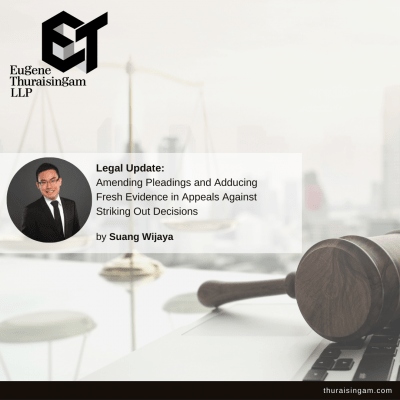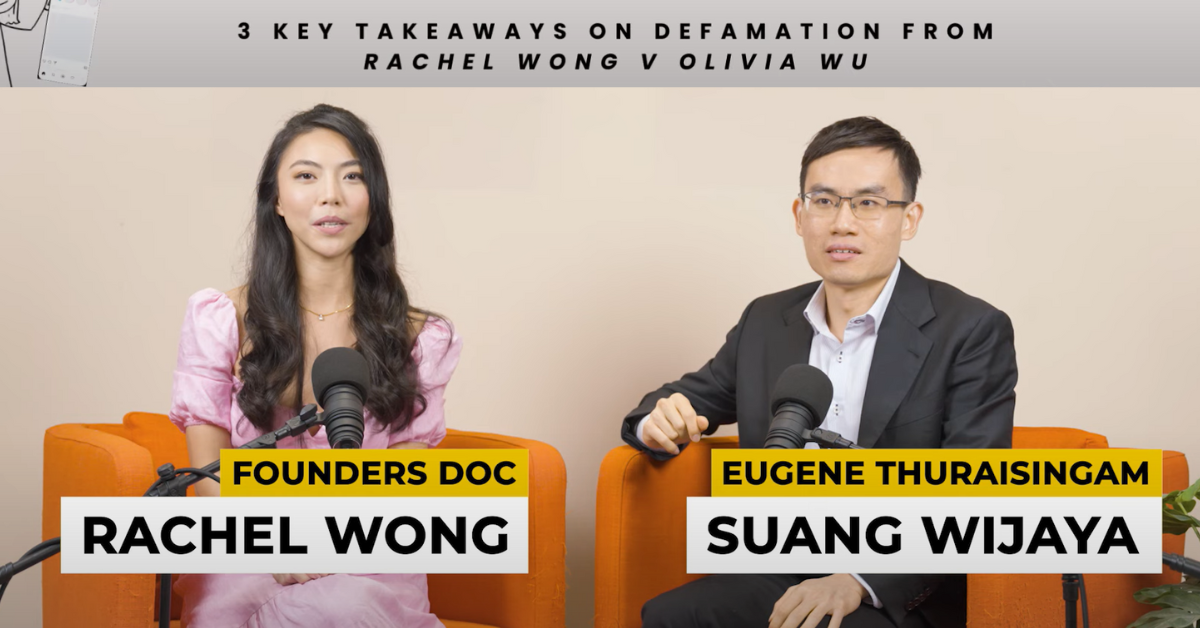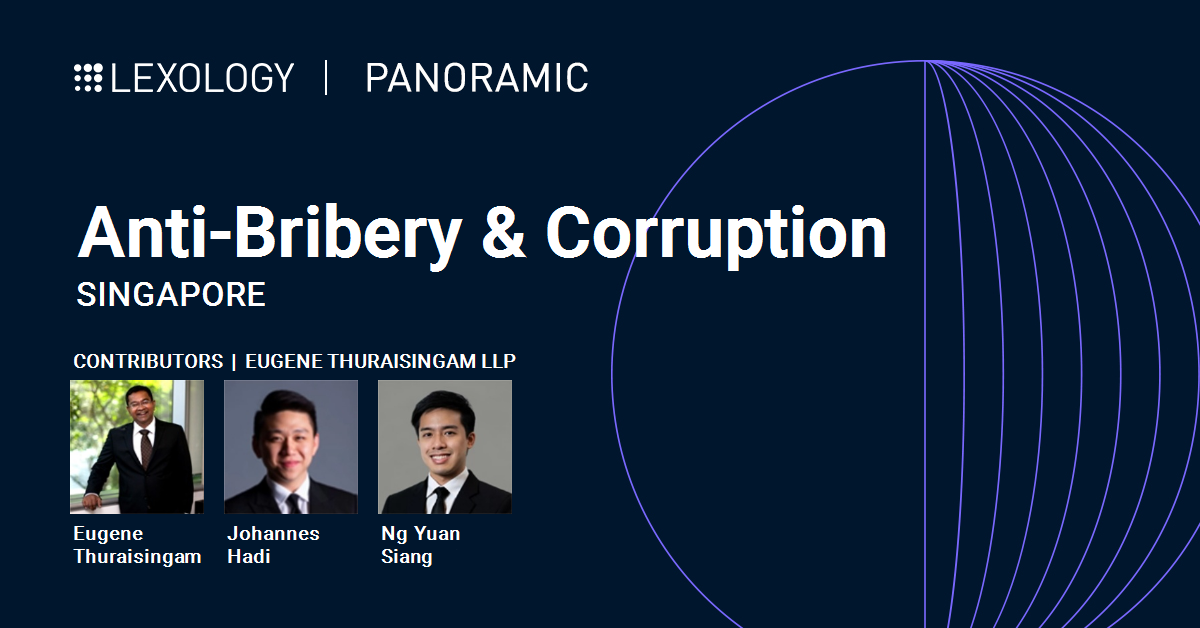Amending Pleadings and Adducing Fresh Evidence in Appeals Against Striking Out Decisions
Legal Update by Suang Wijaya
A. Introduction
1. In Fauziyah bte Mohd Ahbidin (executrix of the estate of Mohamed Ahbideen bin Mohammed Kassim (alias Ahna Mohamed Zainal Abidin bin Kassim), deceased) v Singapore Land Authority and others [2020] SGHC 123, the High Court Judge (the “Judge”) overturned the Assistant Registrar’s decision striking out the plaintiff’s claim. In doing so, the Judge assessed the plaintiff’s claim by reference to a proposed amended Statement of Claim (the “Proposed SOC”) that was put forward during the appeal process. The Judge took the practical course of taking the Proposed SOC into account for the appeal, without the plaintiff having to take out a separate application to amend her pleadings.
2. The Judge also granted the plaintiff leave to adduce fresh evidence addressing the concerns which had led to the Assistant Registrar finding at first instance that the claim was unsustainable. The Judge clarified the applicable principles on adducing fresh evidence in Registrar’s appeals. The Judge held that for an appeal against a striking out decision, the Ladd v Marshall [1954] 1 WLR 1489 (“Ladd v Marshall”) condition of “non-availability” should generally be relaxed.
3. On the merits of the appeal, the Judge reiterated that the power of striking out should only be exercised in plain and obvious cases. Having regard to all the facts, including the Proposed Amended SOC and the fresh evidence, the Judge dismissed the Defendants’ (collectively the “Government’s”) arguments that the claim:- (a) is factually unsustainable; (b) is legally unsustainable; (c) is an abuse of process; and/or (d) is time-barred.
4. Suang Wijaya and Johannes Hadi were appointed after the plaintiff’s claim was struck out at first instance. The team succeeded in persuading the Judge to restore the claim.
B. Background
5. The claim involves four plots of land located in Siglap (the “Siglap Land”). The Siglap Land contains a cemetery called “Kubur Kassim”.
6. The legal history surrounding the Siglap Land is complex and summarised as follows:-
a. As of 1920, Ahna Mohamed Kassim bin Ally Mohamed (“Kassim”), the plaintiff’s grandfather, held a 21/26 share in the Siglap Land. In 1920 and 1921, Kassim executed deeds (the “1920/1921 Deeds”), which had the effect of establishing a wakaf (a form of Muslim charitable trust) over the Siglap Land. Under the 1920/1921 Deeds, the whole of the Siglap Land and its income was “to be appropriated and used by the general public of the Mohamedan community in Singapore as a public burial ground for Mohamedans under the name of Bukit Wakaff Siglap”, and “shall be a charitable property according to the custom or usage of Tanah Wakaf”.
b. In 1928, Ahna Mohamed Zainal Abidin bin Kassim (“Zainal”), Kassim’s son (and the plaintiff’s father) was born.
c. In 1932, Kassim executed a testamentary document (the “1932 Will”). The 1932 Will directed that the income from inter alia the Siglap Land is to be distributed in a different manner from the 1920/1921 Deeds. Notably, the 1932 Will provided that after Kassim’s death, a share of the income from the Siglap Land was to be given to Zainal.
d. In 1935, Kassim passed away.
e. In 1959, Zainal obtained an order of court (the “1959 Order”) vesting the Siglap Land in four individuals, including Zainal, in their capacity as trustees pursuant to the 1920/1921 Deeds. In 1962, Zainal obtained a grant of letters of administration to Kassim’s estate (the “1962 Grant”). The 1932 Will was not annexed or referred to in the application and the 1962 Grant.
f. In 1962, an order (the “1962 MHEB Order”) was made under s 4 of the Muslim and Hindu Endowments Ordinance (Cap 271, 1995 Ed) (the “MHE Ordinance”), purporting to vest the Siglap Land in the Muslim and Hindu Endowments Board (“MHEB”). Section 4 of the MHE Ordinance provides that an order such as the 1962 MHEB Order can only be made over land that is an “endowment”.
g. In 1966, the Administration of Muslim Law Act 1966 (“AMLA”) came into force. Section 6 of AMLA provides that all land vested in MHEB shall automatically vest in Majlis Ugama Islam Singapura (“MUIS”).
h. In 1987, the State exercised its power under s 5 of the Land Acquisition Act (Cap 152, 1985 Rev Ed) (the “LAA”) to compulsorily acquire the Siglap Land (the “1987 Acquisition”). On the footing that the SIglap Land was vested in MUIS at the material time, statutory compensation was awarded to MUIS.
i. In 2011, Zainal passed away. The plaintiff is the sole beneficiary of Zainal’s estate.
j. From 2016 to 2019, the plaintiff engaged in pre-action correspondence with the Government, asserting a claim over the Siglap Land on behalf of Zainal’s estate. In July 2019, the plaintiff commenced these proceedings.
C.The Government’s arguments
7. Before the Assistant Registrar, the plaintiff’s claims centred on the contentions that:-
a. Kassim belonged to the Hanafi school of Muslim law.
b. Under the Hanafi school of Muslim law, a person can only make an inter vivos disposition of up to one third of his assets. Hence, the 1920/1921 Deeds were effective in establishing an inter vivos wakaf over only one-third of Kassim’s assets. Kassim’s estate therefore retained a beneficial interest over a portion of the title to the Siglap Land after Kassim’s death.
8. Before the Assistant Registrar, the Government’s key arguments include:-
a. The plaintiff’s claim that Kassim belonged to the Hanafi school is factually unsustainable. In obtaining the 1962 Grant, Zainal signed an affirmation which included a statement that Kassim belonged to the Shafi’i school of Muslim law.
b. The plaintiff’s claim that a Hanafi Muslim can make an inter vivos disposition of only up to one-third of his assets is legally unsustainable. Singapore courts have held that under the Shafi’i school, there is no legal restriction on inter vivos dispositions of property, including by way of inter vivos wakaf. The plaintiff has not put forward any material to suggest that the legal position is different under the Hanafi school.
c. The plaintiff’s claim is an abuse of process. On the affidavits, it is clear that the plaintiff and other witnesses have knowingly made false claims. There is also no purpose served by this action, as any subsequent judicial review proceeding to quash the 1962 MHEB Order or the 1987 Acquisition will be time-barred under O 53 r 1(6) of the Rules of Court (Cap 322, R 5, 2014 Rev Ed) (the “ROC”).
d. The plaintiff’s claim is time-barred under the doctrines of laches and/or acquiescence. Zainal, the administrator of Kassim’s estate, never asserted a beneficial interest over the Siglap Land in his lifetime. Zainal has also acquiesced by obtaining the 1959 Order, which affirmed the 1920/1921 Deed.
9. The Assistant Registrar struck out the claim on the grounds in paragraphs 8(a) and (b) above.
D. Proposed amendments to pleadings and application to adduce fresh evidence
10 The plaintiff appealed the Assistant Registrar’s decision, engaging Eugene Thuraisingam LLP to conduct the appeal. On the plaintiff’s behalf, we put forward the Proposed Amended SOC. The plaintiff also applied to adduce fresh evidence, in the form of two factual affidavits and one expert report of Muslim law.
11. At the outset of the hearing, the Judge indicated, and the Government agreed, that the most cost-saving way forward was for the Proposed Amended SOC to be taken into account in considering whether the plaintiff’s claim should remain struck out.
12. The Government contested the application to adduce fresh evidence. The Government argued that all three Ladd v Marshall conditions, particularly the condition of “non-availability”, must be satisfied. It was common ground that the plaintiff could not satisfy the condition of “non-availability”.
13. After hearing the parties, the Judge admitted the expert report and one of the factual affidavits into evidence. She took the opportunity to clarify the applicable principles on applications to adduce fresh evidence in Registrar’s appeals. She explained that the court should evaluate the features of the proceedings before the Assistant Registrar. Where the appeal is an interlocutory appeal or one arising out of a hearing which lacks the characteristics of a trial (“interlocutory end of the spectrum”), the court remains guided by the Ladd v Marshall requirements but is not obliged to apply them in an unattenuated manner.
14. Applying the principles, the court held that an appeal against a striking out decision lies on the interlocutory end of the spectrum. A striking out application is a summary process with no oral evidence and do not bear the features of a trial. On this basis, the condition of “non-availability” should be relaxed.
15. Having regard to the Proposed Amended SOC, the Judge held that the expert report and one factual affidavit fulfilled the conditions of “relevance” and “apparent credibility”. Accordingly, she admitted them into evidence.
E. The Judge’s holdings
16. Turning to the merits of the appeal, we clarified that at the trial of the action, the plaintiff will seek declarations that the beneficial interest to a relevant portion of title to the Siglap Land remained vested in Kassim’s estate:- (a) before the 1962 MHEB Order; and (b) before the 1987 Acquisition. We also clarified that, with the Amended Proposed SOC, there are now two alternative prongs to the plaintiff’s substantive claim:-
a. First, as originally pleaded, Kassim has the legal power only to make an inter vivos disposition (including by way of wakaf) of up to one-third of his assets.
b. Second and alternatively, the wakaf established by the 1920/1921 Deeds did not divest Kassim of his beneficial interest in the Siglap Land. The 1932 Will, a testamentary wakaf, divested Kassim of his beneficial interest in the Siglap Land (up to one-third of his assets). Accordingly, Kassim (and subsequently Kassim’s estate) retained the beneficial interest in a portion of the title to the Siglap Land.
17. After hearing arguments and reserving judgment, the Judge dismissed all the Government’s submissions in favour of striking out:-
a. The Judge was not satisfied that the claim is factually unsustainable. There was some material in the fresh factual affidavit to indicate that Kassim was born in India. The fresh expert opinion indicated that a Muslim born in India was more likely to belong to the Hanafi The Judge found “not clearly unreasonable or untenable” our submission that little weight should be attached to Zainal’s sworn statement that Kassim was of the Shafi’i school, as there is evidence suggesting that Zainal may not have read or fully understood the contents of the statement.
b. The Judge was not satisfied that the claim is legally unsustainable. As to the first prong of the plaintiff’s claim, the Judge noted that all the cases holding that there is no legal impediment to inter vivos dispositions of properties dealt with the Shafi’i school of Muslim law. As to the second prong, the Judge noted the expert report’s explanation that under Abu Hanifa’s (the founder of the Hanafi school) conception of wakaf, only a testamentary wakaf (such as the 1932 Will) can divest a person of title to his property, and even then only up to one-third of the person’s assets. The Judge therefore held that the plaintiff’s substantive claims are not obviously unsustainable.
c. The Judge was not satisfied that the claim is clearly time-barred, whether under the Limitation Act (Cap 163, 1996 Rev Ed) or the doctrine of The Judge noted that the plaintiff has raised various arguments which are “not so clearly unsustainable or inconsistent to be rejected at this early stage of the proceedings”. These include the point that there is evidence suggesting that Zainal did not know of the 1932 Will and therefore could not, even with reasonable diligence, have asserted a beneficial interest in the Siglap Land.
d. The Judge was not satisfied that the claim is an abuse of process. On the evidence, the Judge was unable to find at an interlocutory stage that the plaintiff and other witnesses knowingly made false claims. Having heard our arguments on the potential consequential remedies the plaintiff may obtain if she were to prevail at the trial of this action, the Judge found that the plaintiff’s claim would not necessarily be a pointless exercise.
F. Conclusion
18. Although the threshold for striking out is high, a plaintiff should take care to put forward sufficient evidence to rebut a striking out application. Subject to rules proscribing abuse of process, a dissatisfied party taking out a Registrar’s appeal should consider if fresh evidence should be introduced to address concerns which have been flagged up at the first instance hearing.






